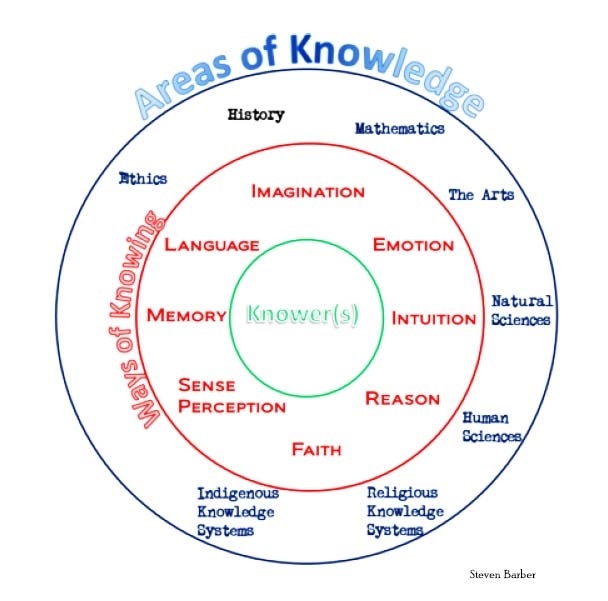|
|
Because the programme is centered on student reflection and questioning, the diagram places the knower(s), as individuals and as groups,
at the centre. Surrounding the Knower(s), four Ways of Knowing are identified, which may permeate an exploration and interpretation of
the world: the receipt of sensory stimuli through 'perception', affected, perhaps, by an emotional and spiritual dimension labeled as
'emotion', formulated and expressed through 'language', and shaped by attempts, through 'reason', to seek order and clarity.
Within the perimeter, Areas of Knowledge are identified, which represent a classification of knowledge into subject areas, many of which
the student pursues in the IB Diploma programme. Six such subject areas are included: mathematics, natural sciences, human sciences,
history, the arts, and ethics. No solid barrier, however, separates the Ways of Knowing and the Areas of Knowledge, because it can be
maintained that the questions 'How do I know?' (pertaining to the Ways of Knowing) and 'What do I know?' (pertaining to the Areas of
Knowledge) interact.
These three elements of the diagram correspond to the three major divisions of the guide which follow: Knowers and Knowing, Ways
of Knowing and Areas of Knowledge. Teachers may wish to structure their TOK courses accordingly.
Nevertheless, the order in which the topics may be approached is flexible, and many entry points and sequences are possible. Teachers
becoming acquainted with the TOK programme for the first time may feel more confident if they begin with topics with which they are
already familiar. Nevertheless, experimenting with conceptual structures other than the given diagram, but dealing with the same TOK
questions, may equally well fulfill the programme aims and enable candidates to meet the objectives, and is encouraged.
The Linking Questions are intended to provide not only links for a course based on the given diagram, but to open up possibilities for
approaches using
alternative structures. It is left to teachers, if they wish, to design their
courses within whatever frameworks they prefer
